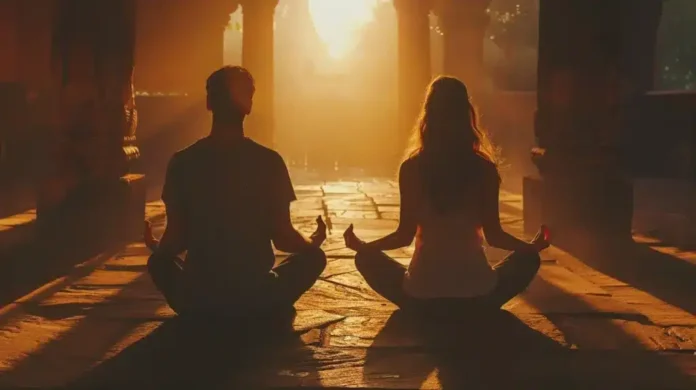How does cord cutting affect the other person? Cord cutting, in the background of relationships, classically mentions to passionately cracking from someone or distancing oneself from a relationship that no longer serves a positive purpose. If you’re requesting about how it affects the other person involved, it can vary based on the nature of the relationship and how it’s felt, but it generally has emotional moments.
Here are a few ways it might affect the other person:
- Emotional Impact: How does cord cutting affect the other person? The other person may sensation upset, rejected, or uncontrolled, especially if they didn’t see it coming or if they still care about the relationship. It can be particularly hard if one person sensations that they were more capitalized than the other.
- Confusion or Uncertainty: How does cord cutting affect the other person? If the choice isn’t connected clearly, the person being distanced from might be disorderly about why it occurred or what went wrong, which can lead to prevention or a sense of loss.
- Self-Reflection: How does cord cutting affect the other person? On the casual side, if the “cord cutting” is done with respect and for growth, the person on the receiving end might go through a procedure of self-reflection, learning from the situation, and maybe attainment a better sympathetic of their own expressive needs.
- Relief or Growth: How does cord cutting affect the other person? In some cases, especially in poisonous or unhealthy relationships, the person left behind might experience release or even thankfulness over time. They may come to understand that the relationship was property them back or causing needless stress.
Signs of health and unhealthy cording
How does cord cutting affect the other person? The idea of “cording” can be supposed of as the expressive connection between people, whether it’s healthy or unhealthy. This connection can apparent in both positive, supportive ways and negative, draining ways. Here’s how to tell the change between healthy and unhealthy cording:
Signs of Healthy Cording:
- Mutual Respect: Both people value each other’s boundaries, feelings, and personal growth. There’s a sense of fairness and shared care in the relationship.
- Emotional Support: You are there for each other in periods of need, provided that ease, praise, and understanding. Both people feel elevated by the connection.
- Individuality is preserved: Healthy cording allows both people to raise separately. There’s room for personal development and separate interests, without one person down themselves in the other.
- Clear Communication: Both parties sensation relaxed stating their needs, desires, and concerns. Any issues are held in a way that respects both people’s emotions.
- Trust: There’s a strong sense of trust, where both individuals trust on each other without feeling controlled or operated.
- Balance: The relationship touches stable—both sides contribute to the connection in a meaningful way, without one person taking too much or giving too little.
Signs of Unhealthy Cording:
- Emotional Dependency: How does cord cutting affect the other person? One person may touch excessively dependent on the other for emotional proof or support. This can main to feelings of “needing” the other person in an unhealthy way, instead of having a stable, self-determining emotional state.
- Control or Manipulation: How does cord cutting affect the other person? One separate may attempt to control the other’s movements, choices, or emotions. This could comprise guilt-tripping, gas lighting, or irritating to command their spouse’s behavior.
- Inability to Set Boundaries: How does cord cutting affect the other person? How does cord cutting affect the other person? If one or both people can’t preserve healthy particular limits (whether physical, emotional, or mental), it can main to feelings of bitterness, tiredness, or being overcome.
- Toxic Positivity or Avoidance: How does cord cutting affect the other person? In unhealthy cording, there might be a attention on only preserving a “perfect” image of the association, circumventing battle or the expression of negative emotions, which builds hindrance and unaddressed issues over time.
- Lack of Independence: In unhealthy cording, there’s often a sense of losing one’s self in the relationship. Interests, hobbies, or friendships outside the relationship might be abandoned or disheartened.
- Feeling Drained: After connections, one person may feel emotionally fatigued, anxious, or worse off rather than feeling thrilled or supported. If you frequently sensation like you’re giving additional than you’re getting, it could be a symbol of unhealthy cording.
- Fear or Anxiety: If the relationship or joining makes you feel anxious, frightened, or uncertain about your place in it, it could be a symbol that things are unhealthy. This could stem from an unstable emotional exchange, fear of rejection, or management.
How to Address Unhealthy Cording:
If you find that you’re in a relationship with unhealthy cording, location clear limits, having open conversations, and practicing self-care can help. It might also involve knowing patterns of behavior that need to be talked—either by working on them together or possibly reconsidering the relationship.
Conclusion
To accomplish, cord cutting—emotionally flaking from a relationship—can have a important influence on the other person complicated, but the result differs depending on the nature of the association and how it’s touched.
If done with clearness, respect, and thought, the other person may practice a range of emotions from sorrow or misperception to eventual growth and self-reflection. However, if the process is sudden, uncommunicated, or feels unconcerned, it can lead to feelings of rejection, hurt, or emotional disorder.
Eventually, the way cord cutting affects someone mainly depends on how the decision is made, whether the other person had an mindfulness of the separate, and how both individuals navigate the shift expressively. In some cases, it can adoptive healing, while in others, it may create unsettled pain.


